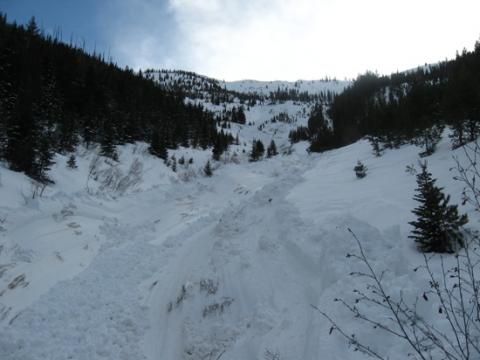A Montana man snowboarding the backcountry of Glacier National Park alone was identified Friday as the victim of a massive slab avalanche that swept down 7,131-foot Mount Shields.
Park officials said 37-year-old Brian Curtis Wright, of East Glacier, was killed Wednesday afternoon. His body was recovered Thursday in avalanche debris on the northeast face of the mountain, which is located just in the park's southeastern corner.
Rangers believe Mr. Wright triggered a large slab avalanche approximately 1 p.m. Wednesday shortly after talking to his mother via cell phone from the summit of Mt. Shields.
The Mt. Shields area is popular with backcountry ski and snowboard enthusiasts.
The fatality was reported to park rangers around 2 p.m. on Thursday. The reporting party told rangers they had last heard from Mr. Wright at 6 p.m. on Tuesday, when he texted friends that he was on Mt. Shields. When friends did not receive responses to subsequent text messages on Wednesday, they grew concerned, park officials said Friday.
On Thursday, a friend located Mr. Wright’s vehicle at the Fielding Ranger Station trailhead and skied up to Mt. Shields where the snowboarder's body was spotted high in a gully within the slide path of a recent avalanche. The backcountry party skied out and called park headquarters to report the avalanche and fatality.
Park personnel were dispatched to the trailhead Thursday afternoon. Rangers skied up the northeast face of Mt. Shields to where they located Mr. Wright’s body and confirmed the fatality at 5:45 p.m.
At the scene, rangers found tracks that suggested Mr. Wright had made two trips up the face of Mt. Shields. One set of tracks was located in an open area with few trees. Field personnel observed a 2-foot-deep fracture in the snow pack just below the summit of Mt. Shields on its northeast face. Rangers believe this route most likely triggered the avalanche, which ran about 2,000 vertical feet; the overall reach of the avalanche was
approximately 2,500 to 3,000 feet.
The avalanche was approximately 150 yards wide and narrowed as it ran down a narrow gully. Mr. Wright’s body was about 200-300 yards above the end (toe) of the avalanche slide path. Investigating rangers believe he tumbled approximately 2,000 feet before
his body came to rest at an elevation of 5,427 feet. Avalanche debris in the vicinity of Mr. Wright’s body was measured at 20-30 feet deep; however, his body was only partially covered in the avalanche debris.
Mr. Wright was an avid outdoorsman and knowledgeable backcountry traveler, the park noted. Friends believed that Wright had an avalanche transceiver, but thus far,
neither Wright’s backpack nor his transceiver have been located, they said.


 Support Essential Coverage of Essential Places
Support Essential Coverage of Essential Places






